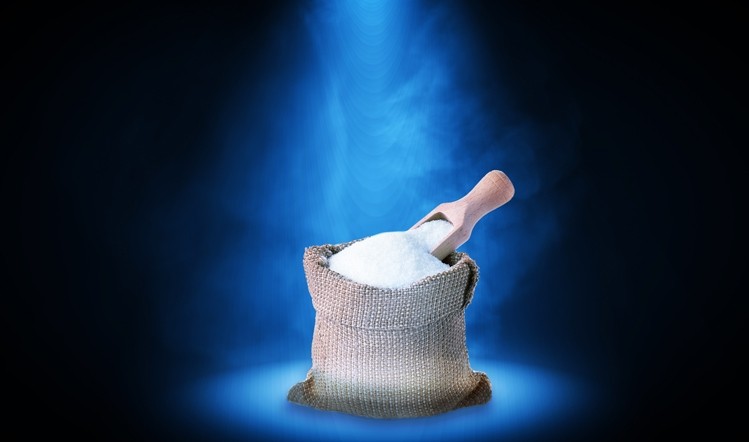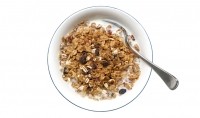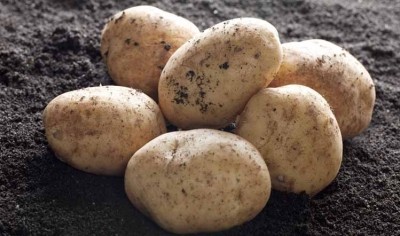FEATURE
Sugar reduction: why it’s about more than just sweeteners

- No single ingredient can replace sugar
- How soluble fibres can play a role
- Flavours-based approaches
- Changing the size, shape and density of sugar
- A shift in focus to overall calories
With the government’s 2020 sugar reduction target looming and the soft drinks sugar levy kicking in this April, cutting sucrose levels remains a key priority for many food manufacturers.
Stevia sweeteners have emerged as the lead ingredient in this campaign, as they tick the natural box, contribute zero calories and are up to 300 times sweeter than sugar.
One of the downsides of stevia, however, is that it can impart a bitter aftertaste.
“Regular stevia products with lower Rebaudioside A [RA] purity tend to be highly soluble, but exhibit a detectable bitterness or lingering aftertaste,” explains Dr Kavita Karnik, director of nutrition, innovation and commercial development at Tate & Lyle.
“However, when RA purity is increased to improve the taste, cost typically rises and solubility can become an issue.”
Eliminating stevia’s aftertaste would represent a massive breakthrough for product developers, but stevia – and sweeteners in general – are no panacea to sugar reduction. For the reformulation challenge to be met, nutritionists and ingredients makers agree a more holistic approach is needed.
“The key to reducing calories and sugars without impacting the taste experience is finding the right mix of solutions. Right now, there isn’t a holy grail when it comes to sweeteners – sugar replacement is never really a one-for-one exchange,” says Karnik.
No single ingredient can replace sugar (return to top)
The challenge with stevia is that it does not deliver the rest of sugar’s functionality, adds Lucy Dahlgren, chief executive of Swedish sugar reduction specialist Bayn Europe.
“Sugar is an important building block in processed food. There is no single ingredient that can replace it.”
Demonstrating a holistic approach, Bayn Europe has collaborated with Bioscience Food Solutions to create an “indulgent” 75% sugar-reduced soft ice cream – a challenge as the sugar, in addition to sweetness, adds antifreeze functionality.
The result is a calorie-reduced, stevia-sweetened ice cream that is “indistinguishable” from the traditional, high calorie version.
Similarly, Tate & Lyle last year announced a partnership with Sweet Green Fields (SGF), giving its customers access to SGF’s stevia solutions.
These include the new Optimizer Stevia line, which was designed to meet or exceed the taste profile of standard stevia extracts ranging from RA80 to RA97, while lowering costs by up to 30%. It is said to enable around 50% sugar replacement and provide solubility better suited to high-concentration stevia applications.
How soluble fibres can play a role (return to top)
Tate & Lyle says soluble fibres can help build mouthfeel and body back into a beverage, and as a result, it has had interest among beverage manufacturers seeking to incorporate fibre across several categories.
Of particular interest is oat fibre, due to the current appeal of oats.
Tate & Lyle’s PromOat Beta Glucan is a natural soluble oat fibre that, according to Karnik, can reduce calories by replacing fat and sugars in smoothies, nectars and dairy alternative drinks, with the added promise of reducing blood cholesterol and increasing satiety.
Flavours-based approaches (return to top)
Exploitation of flavours is also emerging as a sugar reduction tactic, claims Pretima Titoria, head of ingredients at Leatherhead Food Research.
She references DouxMatok’s proprietary flavour carrier particle, which reportedly enables sugar and calories to be reduced by 50% without losing sweetness or raising costs.
“Potential applications include yogurts, baked goods, breakfast cereals and snacks,” Titoria says.
The SweetLite range from International Taste Solutions (ITS) is another new flavours-based approach for assisting with sugar reduction.
Launched in 2016, SweetLite is designed to impart sweetness perception to sugar-reduced bakery products. Additions to the range are SweetLite Boost – an all-round non-flavour-specific sweetness booster – and SweetLite texture systems, which combine starches, fibres and other functional ingredients with top note flavourings.
“These can help in delivering 20–40% sugar reduction, with some replacement of the sugar bulk,” says ITS head of innovations Carl Smith.
He cites typical applications as cakes, cookies, flapjacks, granola, porridge, sweet pastry, fruit fillings, and sports nutrition drinks.
Changing the size, shape and density of sugar (return to top)
If there is a need to reduce sugar and maintain sweetness perception in products where the sugar remains in its solid crystalline state, without the use of bulk and intense sweeteners, Titoria suggests that changing the sugar crystal size, shape and density may offer a solution.
“Solid products at the point of swallowing often have a large quantity of sugar still intact in the product matrix. It is possible to manipulate the product structure to enhance sugar dissolution in the mouth and rapid flavour release can allow a means of reducing sugar in the product,” she says.
A range of sugar crystal sizes are already available for use in products, and Titoria says emerging technologies that will produce hollow sugar crystal or thin coatings of sugar around an inert low calorie ingredient, such as calcium carbonate, could be an option to deliver a sweet taste at lower sugar levels.
A shift in focus to overall calories (return to top)
Sugar has been targeted as the main dietary demon in recent health campaigns, but with the UK government aiming to broaden its focus to overall calorie intake, food manufacturers may soon be stepping up their fat reduction efforts too.
With this in mind, US firm Dow has rolled out its new Wellence Smart Fry in Europe in the past few months. This ingredient is said to reduce fat and associated calories by 30% in fried batter or coating systems while keeping full-fat taste and texture intact and increasing yield.
In the labs, meanwhile, Dr Stephen Euston at Heriot-Watt University and Dr Paul Clegg at the University of Edinburgh have been working on oleogelation as a fat replacer.
“We are working with a combination of sterols and sterol esters to form an oleogel so we can replace the saturated fat you would normally have to add to polyunsaturated oils to get them to solidify,” explains Euston.
Why infant formula makers can expect increasing pressure
With a national strategy in place to significantly reduce childhood obesity within 10 years, UK food manufacturers can expect mounting pressure to reformulate children’s food and beverage products.
Early intervention is a policy supported by Sandra Einerhand, of consultancy Einerhand Science & Innovation, who says that “intervention in nutrition is most effective in early life”.
“This is a period when the diet can induce epigenetic modifications of the DNA and/or gut microbiome changes that have long lasting effects on health”, she explains.
When it comes to reformulation, Einerhand believes “there is a lot to do”, particularly in terms of the quality of carbohydrates in some infant formulas and products targeting toddlers.
For instance, not all infant and follow-on formulas contain lactose – the primary carbohydrate found in breast milk, with some containing added sugars like maltodextrin and corn syrup.
Einerhand says lactose should be the primary digestible carbohydrate for several reasons.
“Lactose is the very reason breastfed babies thrive as it provides the calories needed to fuel their growth. In addition, lactose that is not absorbed in the small intestine of the infant will end up in the large intestine to stimulate beneficial bacteria and promote gut health.
“Lastly, lactose provides the only readily available source of galactose,” she explains.



















